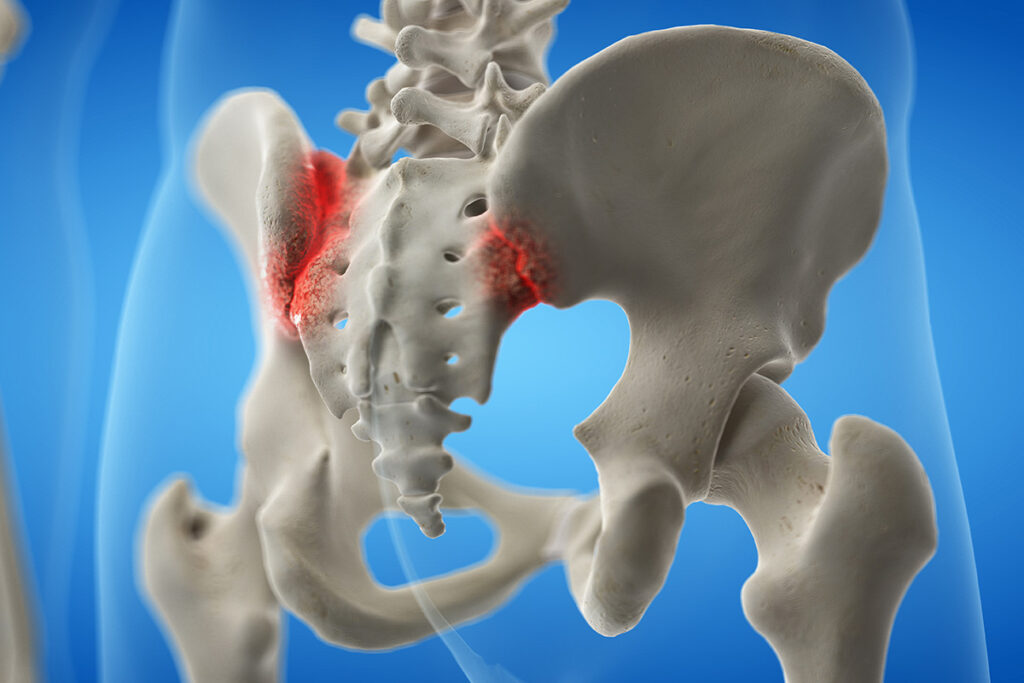
What is The Sacroiliac Joint?
The sacroiliac joint, also called the SI joint, is located between the sacrum and the ilium bones of the pelvis. The main function of the sacroiliac joints is to absorb shock between the upper body and the pelvis and legs. Connected by strong ligaments that support the spine, the sacroiliac joint also helps carry the entire weight of the upper body. While the sacroiliac joint typically has little motion it is estimated that the sacroiliac joint is responsible for 15% to 30% of lower back pain cases.
Sacroiliac Joint Dysfunction
Aggravation and inflammation of the sacroiliac joint can lead to pain, stiffness, and other symptoms throughout the lower back. Sacroiliitis is a condition that refers to inflammation of one or both sacroiliac joints. Those suffering from sacroiliitis may experience pain in the low back, buttock or thigh, depending on the level and location of the inflammation. Issues with sacroiliac joints can sometimes be hard to diagnose as it can mimic symptoms of other common spinal issues such as a disc herniation or sciatica.
How Does a Sacroiliac Joint Injection Work?
While there is no single test that can diagnose sacroiliac joint dysfunction, a combination of diagnostic test results are taken into consideration together to form an accurate diagnosis. In most cases, sacroiliac joint pain can be effectively managed by using non-surgical treatments. A sacroiliac joint injection, sometimes called a sacroiliac joint block, can be used to diagnose and treat the symptoms of sacroiliitis. A sacroiliac joint injection utilises a numbing solution of lidocaine or bupivacaine into the sacroiliac joint itself. If the injection relieves pain, the sacroiliac joint can be confirmed as the source of pain. Sacroiliac joint injections focus on alleviating pain and restoring normal motion by reducing inflammation. Most patients can experience pain relief after only one or two injections and can experience months of relief. However, it is never recommended that patients receive more than three injections in a six-month time frame.
Schedule Your Next Spinal Consultation
Here at the offices of William Capicotto MD we leave every option on the table, both surgical and non surgical, to suit the needs of our patients. Our goal is simple: to restore motion and get our patients back to the life they had before the pain started. To schedule your spinal consultation please call our office at (716) 881-0382.



